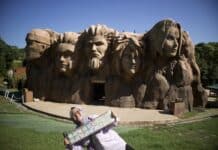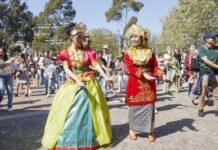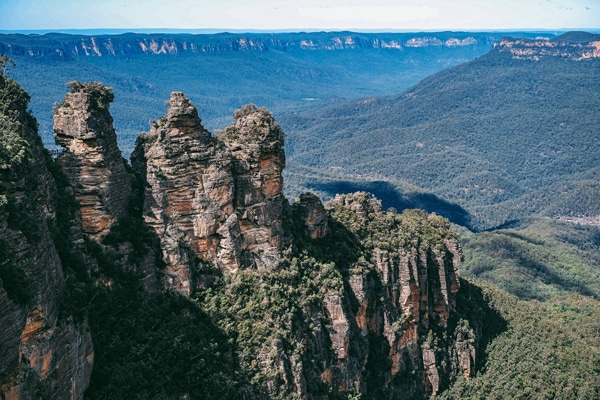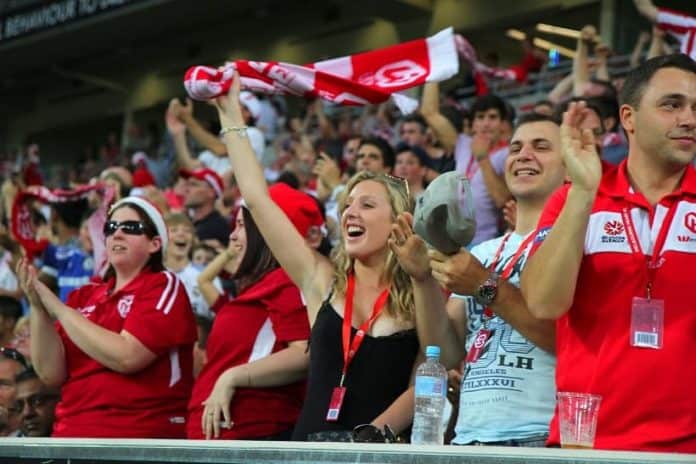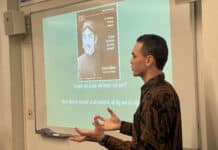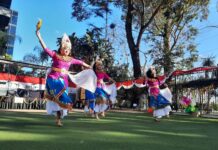Football plays way too much of a role in Nasya Bahfen’s life – and in the recent Asian Cup which Australia hosted, she got to combine her love of the game with her passion for photojournalism
In the second half I sat behind the Palestinian goal trying to decide which of these teams of ‘lions’ I wanted to win more. The “Lions of Canaan” lived under occupation and their mere presence at this tournament was a feat in itself. But I had seen every match played by the Palestinians and they had never played a tighter, stronger, more defensive game than that night. Their keeper was superb, making save after save as the “Lions of Mesopotamia” attacked. There was much to admire about the Iraqi team too, who despite the effects of war on its country actually took out the title two Asian Cups ago.
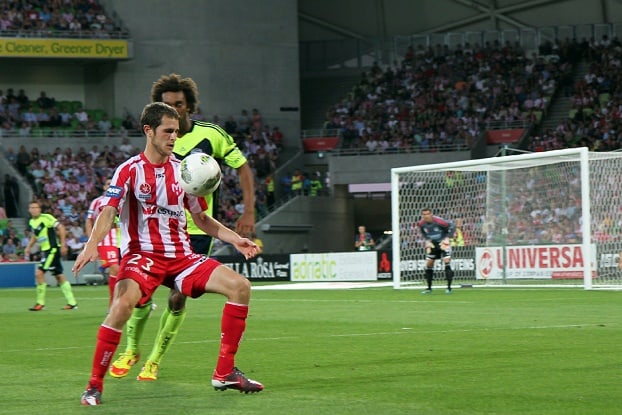
I was in Canberra for an Asian Cup match between Iraq and Palestine. Prior to the tournament I was an Asian Cup community ambassador, and had registered as media for the tournament. The only thing is – I chose to register as a photographer and not a journalist (which was my occupation for fifteen years, before my current role as a journalism academic). Why? A couple of years ago I started dabbling with a camera, shooting on an old Olympus E-450, and any of the Canon or Nikon models I borrowed from work. When you take up a new hobby you quickly discover what subset of that hobby attracts you: for me, a former journalist, photojournalism was a huge drawcard. I knew that it was a dying occupation (last year, Fairfax got rid of most of its news photographers in favour of buying images from agencies like Getty or AFP images) and that I would never make money from this hobby, but I did it because I loved the challenge of telling a story in images. I could write a news story with my eyes shut; I’d done it for a living for more than a decade. Picking a small set of photos – or one photo – and using it for narrative purposes in place of words was like trying to solve a puzzle. I was very much in the beginning stages of learning how to solve that puzzle. Before the Asian Cup, I’d practiced taking photos of sporting and cultural events I was involved in. I spent two years as a volunteer media assistant with the A-League team which was formerly known as the Melbourne Heart; one of my favourite shots from those days was of a young Mate Dugandzic trying to control the ball (he still plays for the club, now called Melbourne City as part of City Football Group who own Manchester City and NY City FC). Even though the exposure was off, the composition was okay, and it told a story of sorts. You can see it here: https://picasaweb.google.com/106621763906505060991/TheHeartKeepsBeating#5689474491087506786. Another photo I took that I liked was of Harry Kewell two World Cups ago – the Socceroos were about to be formally farewelled on their way to South Africa, and as they stood around waiting to be told what to do and where to stand, the former Leeds and Galatasaray man looked over his shoulder to wave to someone. I lifted up my camera and snapped – he looked relaxed, natural and happy. The photo ended up being used by some of my students for the cover of their print publication – you can see it here https://picasaweb.google.com/106621763906505060991/SoccerooSendOff#5479519953351816674.
As a member of the media I went to every Asian cup match in Melbourne, plus the Japan-Palestine match in Newcastle and this one between Palestine and Iraq in Canberra. (For the final in Sydney, I planned to go as a football fan and not media, buying tickets in advance as I knew it would be a sellout.) Each match followed the same routine. I’d join the professional photographers for team shots as the substitutes, then the starting players headed out to the tune of Coldplay’s A Sky Full of Stars. After the teams came out we would then take an allocated photographer’s seat to take match shots. Even though I used a tiny (by comparison) 200mm lens on my Canon 600D, I was able to take some decent photos that were picked up by several publications including football magazines from all over the world and the Guardian here in Australia. I’d set myself tasks each night – for example, I’d aim to take an action shot that didn’t need cropping, or try to take a crowd shot with a clear focal point to improve my composition. I knew several of the professional photographers from the Melbourne Heart/City days, and some were kind enough to give me useful feedback on my photos on Flickr.
There were a couple of highlights during my stint taking photos at the Asian Cup. The first was that during the Socceroos’ match against Oman in Sydney Mark Bresciano, who’d been named a substitute that night, lifted the rope that held back the photographers, then climbed over me and a Japanese photographer on his way to the Australian bench. The Japanese photographer and I looked at each other in shock, wondering if this was normal behaviour by Bresciano. It would have been easier for him to just walk straight to the bench instead of climbing over us! The second highlight was meeting the Palestinian team at their farewell dinner, after the game against Iraq in Canberra. They were the most humble and unassuming of sports stars – and given how much crap they had to deal with in their lives (checkpoints, roadblocks, the threat of arrest), it was great seeing how much they were adored by their fans. One of the Palestinian-Australian photographers took some beautiful pictures of the dinner which he posted at https://www.facebook.com/media/set/?set=a.1590561564506861.1073741834.1492061097690242&type=1.
My friends told me they were jealous of how I got to meet and take photos of good looking sportsmen – but the truth was after seven or eight matches, I posted half jokingly on Facebook that I may have been sick of the beautiful game. Now, I am the sort of person who religiously attends each Melbourne City home match, wakes up during ungodly morning hours to catch Chelsea play, has been to Stamford Bridge in London twice, and plays both futsal and outdoor soccer (in a Victorian women’s state league club, during the Melbourne winter each year). Friends messaged me to ask if my Facebook had been hacked. I was obsessed with football. Could the Asian Cup, as thrilling as it was, have made me sick of it?
Back in Canberra, daylight was fading fast when Iraq finally broke the deadlock. My nose was pressed against my camera as I aimed for a shot from an Iraqi corner, so I didn’t see Younis Mahmoud’s header zip into the back of the Palestinian net, metres in front of me. But I heard the roar as the Iraqi home end erupted, metres behind me. (Replays on TV showed the header was sublime.) Then a penalty, and it was all over – the Iraqis had booked their quarterfinal berth (where they would beat Iran in a sensational game that ended in a penalty shootout, before losing to South Korea in the semis). My gear packed, I walked past the Iraqi strikers hugging the Palestinian keeper and I remember thinking, ‘how could I ever think that I could be over the world’s best and most beloved sport?’
Dr Nasya Bahfen is a senior lecturer in journalism at Monash University in Melbourne




